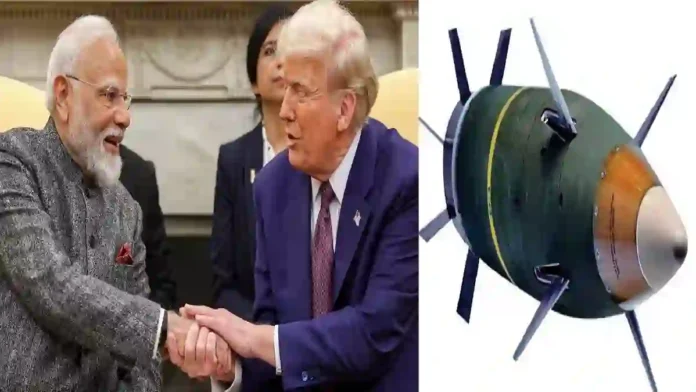Following Operation Sindoor, India has significantly accelerated its defence procurement from the United States, marking a strategic shift in its military supply chain and partnerships. The operation, launched in response to a major terror attack, exposed the extent of Chinese-supplied weaponry in Pakistan’s arsenal, with Indian officials revealing that up to 81% of Pakistan’s arms are of Chinese origin. During the initial strikes of Operation Sindoor, seven out of nine terror targets were hit using US-made Excalibur precision-guided artillery shells, highlighting the operational value of American munitions in high-stakes scenarios.
In the aftermath, the Indian government granted its armed forces emergency procurement powers, enabling the Army, Navy, and Air Force to bypass lengthy tender processes and rapidly acquire critical equipment, including drones, loitering munitions, rockets, and missiles.
Read- India To Fast-Track ₹20,000 Crore 87 Male Drone Project For Defence Forces
This emergency window allows acquisitions worth over ₹50,000 crore, with the Ministry of Defence approving a record ₹400 billion in fast-track procurements across various platforms and domains in June 2025 alone.
The Defence Acquisition Council has also cleared several high-value contracts and proposals, including those for next-generation corvettes, mine countermeasure vessels, and quick reaction surface-to-air missiles, reflecting a broader push for rapid modernization.
India’s urgent wish list from the US now includes additional Excalibur shells, Javelin anti-tank missiles, and advanced surveillance platforms. Negotiations are ongoing to resolve pricing issues for P-8I maritime patrol aircraft and to align US arms export regulations with India’s specific operational requirements.
The Pentagon is reportedly considering diverting supplies from its own stocks to meet India’s immediate needs, underscoring the urgency and the deepening strategic partnership between the two countries.
This procurement push is also driven by concerns over Russia’s increasing dependence on China, which has prompted India to diversify its defence suppliers and reduce vulnerability to potential disruptions in Russian-origin supply chains.
Read- Extended Range Anti-Submarine Rocket (ERASR); Know Its Key Features
Read- India Planning To Establish MRO Facility For S-400 Air Defence Systems Across The Country
The successful deployment of US-origin drones and artillery during Operation Sindoor further validated the operational effectiveness of American systems, accelerating India’s shift towards Washington for critical military technology and spares.
The broader impact of Operation Sindoor extends beyond procurement. The operation has been widely recognized as a technological and doctrinal victory for India, demonstrating the effectiveness of both indigenous and Western-supplied systems against Chinese-exported hardware used by Pakistan.
This has not only boosted confidence in India’s defence manufacturing capabilities but also increased global demand for Indian defence products, as noted by senior government officials.
Operation Sindoor has catalysed a record-breaking surge in India’s defence acquisitions from the US, with a focus on precision-guided munitions, anti-tank systems, and advanced surveillance assets. This reflects both the immediate operational lessons of the conflict and a longer-term strategic realignment in India’s defence partnerships and supply chains.
Based On ET News Report
Agencies




